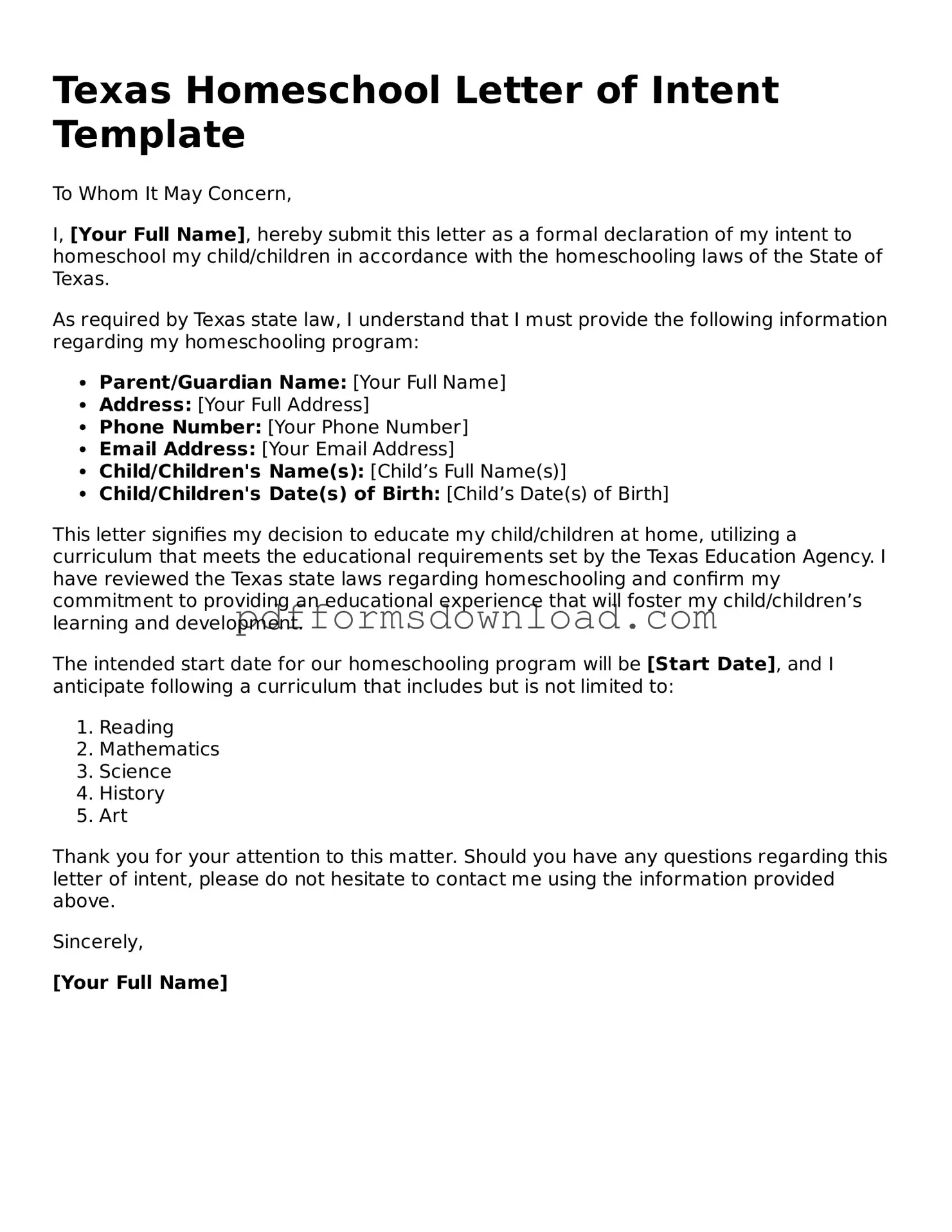Printable Texas Homeschool Letter of Intent Form
The Texas Homeschool Letter of Intent is a formal document that parents must submit to notify their local school district of their decision to homeschool their children. This letter serves as a declaration of intent and outlines the educational plans for the student. Parents interested in homeschooling are encouraged to complete this form to ensure compliance with state regulations.
To get started, please fill out the form by clicking the button below.
Make This Document Now
